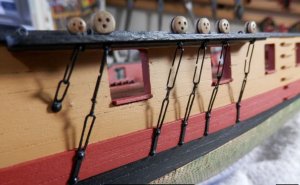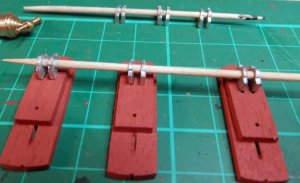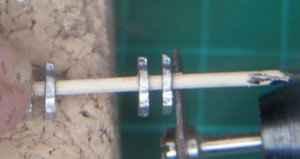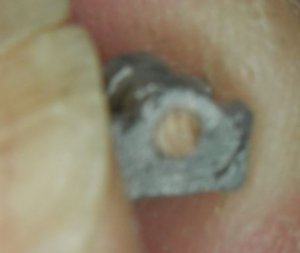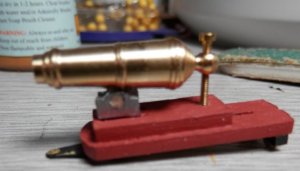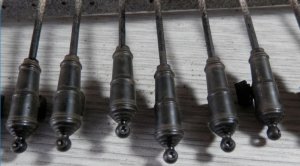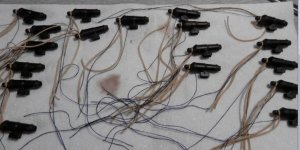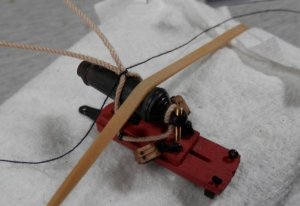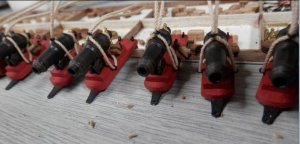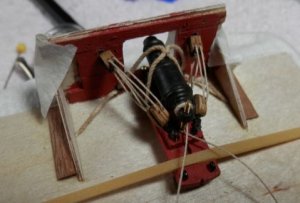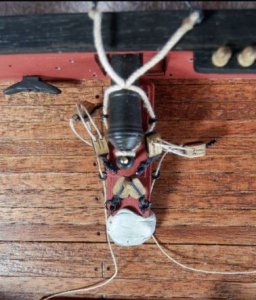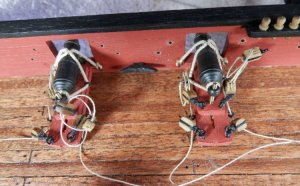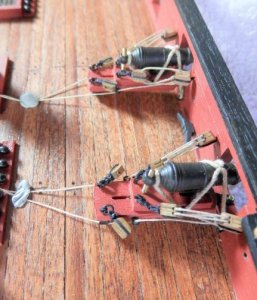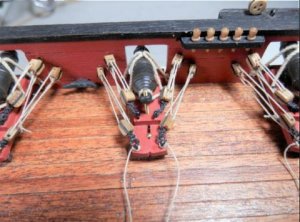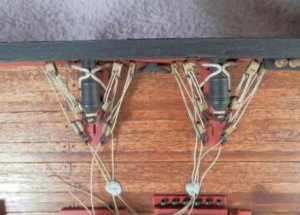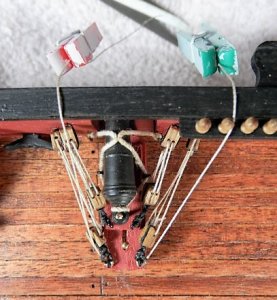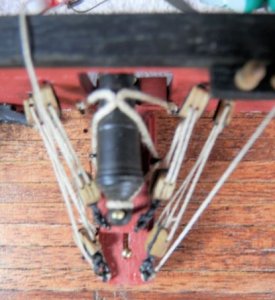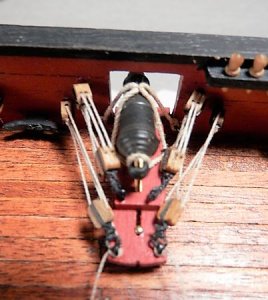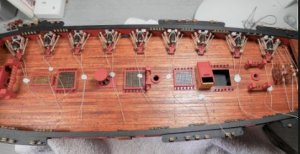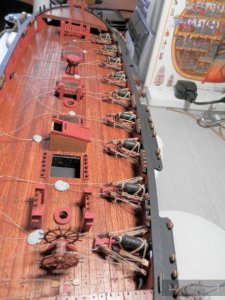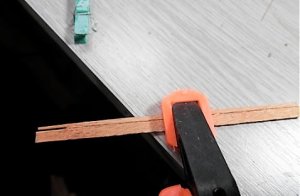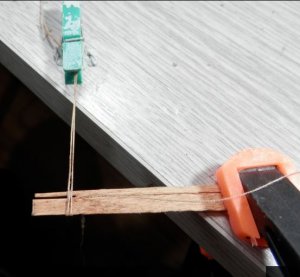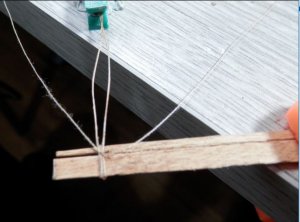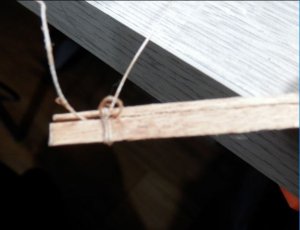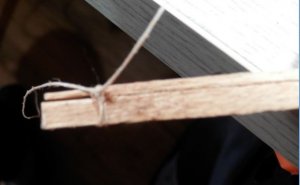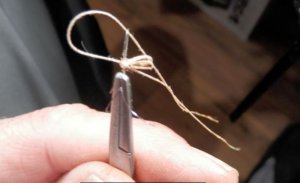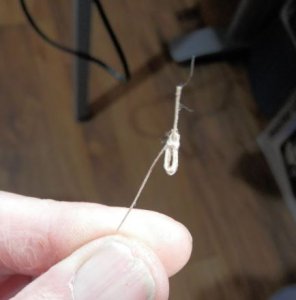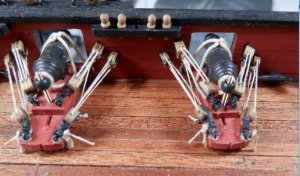Well, I tried coiling the rope on the deck but could not get the look I wanted and after a couple of hours I lost the will to live, so I made some hanks. After trying several ways here’s the method I used:-
1. Make a jig from a couple of planks (note the slot) and clamp it to the bench.
2. Lay a length of cotton in the slot.
3. Wind the cord around the jig. I found that 3 turns was enough but you could go a few more if you want a bigger hank. Put the ends in a peg blue tack’d to the bench to keep some tension on it.
4. Knot the cotton to keep the hank together and trim the ends.
5. Take one of the ends of cord, pass it up through the slot, back down around the hank, back up through the slot and then knot it (reef knot). This secures the hank and also hides the cotton.
6. Pull the hank off the jig. Use some very fine wire to make a needle threader, push through the top (smaller) loop and pull a cord end through. Cut the end at the back of the hank off at the knot. Trim off the end you pulled through to the length required and ‘mould’ the hank to the desired shape.
Hope that makes sense. I had a look on the internet but couldn’t find anyone else’s method, but this worked for me so I thought I’d share it. The photos show the sequence.


